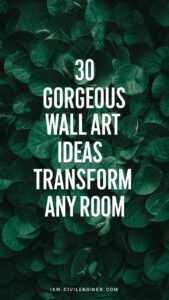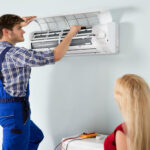If you have ever worked on a mega Construction project you would have already know what is rebar splice coupler? What is mechanical splicing of rebars? What different types are of rebar splicing system? What are “type-1” or “type -2” mechanical splicing systems?
If you don’t know answers to one or more of above mentioned questions than you are lucky to land on this page because today I am going to tell you in depth about mechanical splicing systems and specifically reinforcing bar couplers.
But hang-on because some bonus field tips are also there in the end whether you are form a Contractor side or from Consultant side. I would also be going through various tests and procedures for ensuring quality control of rebar splicing system.
These tips are developed by going through different rebar coupler code, specifications and are actually obtained from different rebar coupler manufacturers.
As in one post I have already explained why overlap or splice is a must in reinforcement fixation. By simple word “Splice” I would mean here “contact splice”.
You can only have a rebar of 12 meters long but your structures are actually not just within this much height so this would seem obviate the need for splicing.
Similarly fixing a 12 meter horizontal bar with 2.8 meters end hook length. So for such and other numerous reasons the rebar over or splice is a must.
According to Master Builders of India, in case of overlap the load transfer mechanism takes advantage of the bond between the steel and the concrete to transfer the load.
It can be explained as that the load from one bar is transferred to the concrete because of its skin friction due to ribs and then that load is transferred from concrete to the overlapped parallel bar.
As the load transfer is dependent on concrete strength so relying on it makes this system of reinforcement doubtful and uncertain.
According to American Concrete Institute ACI code R21.3.2.3, the lapped joints are not always an appropriate means of connecting reinforcing bars.
So before going in detail to rebar coupler why not first take a look at some disadvantages of overlap splices?
Disadvantages of Overlap Contact Splices
- Congestion of Reinforcement
This is I guess one of the most common and the worst problem being faced in Mega Structures with massive reinforcement bars. Because in manual lap splices you connect two bars in parallel direction so if let’s say you have a spacing of 250 mm center to center than a bundle of 3 bars in 3 layers would not even let the concrete peak into those reinforcing bars to have a solid grip. I myself had worked on a project where we had a retaining wall for slope and in there 3 layers of #11 bars made concrete pouring the most difficult job at site.
- Time consuming
Well apparently you would say that time is consumed in both contact splices and mechanical splices but there are case studies that has backed this view point that overlaps are much more time consuming to fix or install. While fixing overlap the two bars are touched and are adjusted according to overlap length as per design and then are wired together.
- Costly Solution
According to a research case study by Singh R. et al, where they have evaluated the monetary impact of tapered thread couplers in columns of a building; the coupler are an effective and an economic replacement of lap splices.
It was also added that benefit-to-cost ratio of mechanical splices is much attractive due to added toughness and load path continuity which are not the available in case of laps.
- Strength Dependency
Like Us on Facebook!
This point is actually already explained in the introduction. In a nutshell, the overlap is dependent on concrete strength for transference of load from one rebar to other. However, in case of mechanical splices the load is directly transferred and is not dependent on concrete.
Subscribe Us on YouTube!
- Difficult Inspection
Well I have over 3+ years experience of rebar inspection at site and every time I saw overlaps I had to use my meter taps to check the overlap length and if that is not okay the complete rebar mesh would be disturbed for the correction and the Contractor is always reluctant to follow the instruction in such case and only wants to add an extra lapping rebar rather than correcting the overlap length. So if you have over 71 bundles in a pour in 3 layers so you better calculate how much times you have to inspect the overlap even if you are able to inspect by just your naked eye.
- Poor Workmanship
As an inspector can’t check all the overlaps in a concrete pour so this random evaluation makes workmanship doubtful. Number of times the overlapping rebars are distant apart and the wiring is loose or not proper.
- Design problems.
Well this is also a time taking work that involves tedious calculation, you have to solve overlap equations as stated in ACI after putting in the strength of concrete, steel, type of rebar coating etc.
Advantages of Rebar Splice Coupler
- Structural Integrity
Mechanical splices or couplers transfer load directly from one bar to other without indirect interaction of concrete so it enhances the structural integrity and thus overall reliability of the reinforcement system. Spliced bars behave as continuous lengths of reinforcing steel bars by providing full strength in tension and compression and stress reversal applications
- Easy to Implement
The threads are made in the steel yard where automatic threading machines are used for precise and optimum pitched threads. So due to involvement of machinery the workmanship is improved and time is reduced as well. At site, the labor just has to rotate the rebars which could be very difficult to splice in case of vertical 12 meter vertical dowels.
- Reduced Congestion
Although the diameter of coupler is bit larger than the reinforcement but it is not the 2 times dia of the rebar which is the case if rebars are overlapped or contact spliced. So you can say that congestion is reduced to almost 80% due to use of couplers.
- Easy Inspection
As the threads are made with machines, so if Contractor follows the required length of thread in rebars than inspection is simple i.e. merely one look is sufficient to tell whether coupler is properly tightened or not.
- Cost efficient solution
I have verified the quantity witness reports in many projects and have calculated the overlap lengths as they are reduced / cut from the quantity of reinforcement. So as per my experience tons of reinforcement is additionally added because of overlap and in comparison to that overlap is far more cheap and economical.
QA / QC parameters for Mechanical Splices
- The threads that are being developed on rebars by automatic threading machine must be observed that their length should be appropriate i.e. if the length of rebar coupler is 90 mm so the length of threads should be 45 mm in case of type-1 couplers. (If you don’t know about types of couplers than don’t worry I am going to write a comprehensive article for that).
For inspection we had deployed on inspector at the steel yard whose duty was just to inspect the length of the threads in lot of reinforcement before dispatching to the site for installation.
- In case of type-1 threaded couplers, the inner threads must be made with a die instead of a lathe as the depth of the cut can be varied by later type of production.
- The Contractor may try to hide the excessive threaded portion length on rebar by unacceptable means. Like in one instance I observed that contractor tried to use cutting disk to grind the excessive threaded portion and then after application of oil used sand to hide the shiny surface. So while inspecting the couplers the excessive length of couplers must be demotivated.
- For the quality of reinforcement production at steel yard a full time QC practitioner should be deputed with sufficient experience in terms of reinforcement production for mechanical splices.
- The Contractor must evaluate the quotations from different suppliers in terms of cost, quality and timely supply of the product. The approval is granted by the Engineer by thoroughly going through the technical performance certificates or test documentation commenting on the couplers.
- The reinforcement bars must be cut by rotatory saw instead of cropping machine. The use of cropping machine results in an inclined end instead of being 90 degree cut therefore in order to engage fully the length of splice coupler the cut angle must be 90 degrees.

- For lubrication in the automatic threading machine, only approved lube should be used and no cheap products or water should be used whatsoever. The quality of lubricant would have direct impact on the thread cut otherwise they would be damaged and would be irregular which not a good practice is.
- The threads produced on the reinforcing bar must be checked in terms of pitch depth and accuracy. Pitch measuring tool or any other suitable tool might help in determination of suitability of the produced thread.

[youtube https://www.youtube.com/watch?v=p0V_CkfHcgo]
The above video shows the working of an automatic rebar threading machine.
- The Contractor must be instructed to procure a bar tightening torque wrench to ensure designed amount of anchorage with the coupler.















